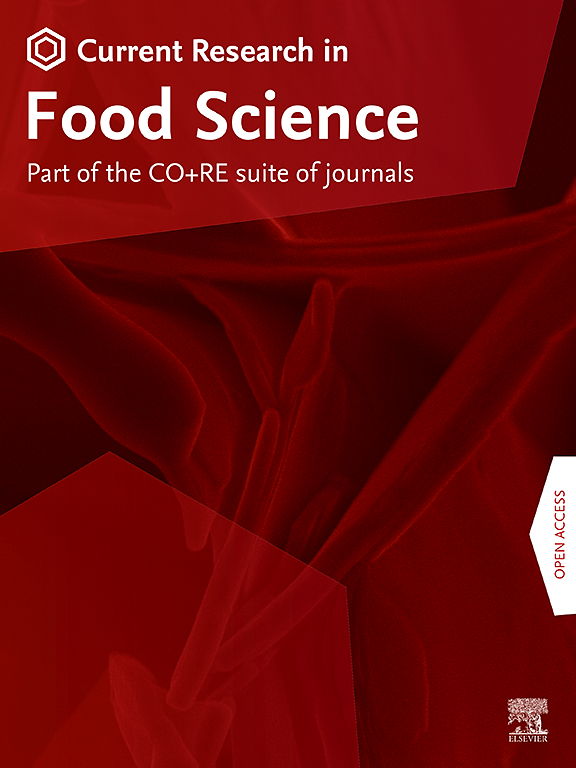Soluble fibres modulate dough rheology and gluten structure via hydrogen bond density and Flory-Huggins water interaction parameter
IF 6.2
2区 农林科学
Q1 FOOD SCIENCE & TECHNOLOGY
引用次数: 0
Abstract
Soluble fibres are gaining increasing interest for functional food applications like bread, but their interaction with gluten and effects on dough rheology are not fully elucidated. This study hypothesized that soluble fibres influence gluten structure and dough rheology by acting as plasticizers and humectants. Plasticizing properties depend on the effective number of hydrogen bonding sites available in the fibre molecule (NOH,s). Humectant properties are related to the water interaction parameter derived from analysis of the sorption behaviour. Oligo-fructoses, inulins, polydextrose and a glucose syrup were added individually and in mixtures to wheat dough to test the hypothesis. PCA and multi-linear regressions showed that the G′ from temperature sweeps increased with an increase in the effective volume fraction of hydrogen bonding sites () in the solvent and in the water interaction parameter (χeff). The enhanced G′ corresponded to a reduction in tan(δ), indicating an increased elastic behaviour. The parameters and χeff also explained the changes in phase transitions during heating, i.e. Tonset and Tpeak of starch gelatinization (R2 > 0.9). Image analysis of the gluten network revealed that fibre structure and physico-chemical properties influenced the gluten network by altering branching rate, lacunarity, and protein strand width. Comparing inulins and polydextrose of similar molecular weights (Mw) indicated that interactions with gluten were influenced more by NOH,s than Mw. High Mw inulins, with a linear structure, promoted junctions in the gluten network through hydrogen bonds, and possibly phase separation in gluten-rich and inulin-rich phases. In contrast, the more hydrophilic, branched polydextrose reduced junction formation in the gluten network due to fewer NOH,s. This study provides new insights into the physico-chemical properties of soluble fibres and their role in wheat dough functionality.

求助全文
约1分钟内获得全文
求助全文
来源期刊

Current Research in Food Science
Agricultural and Biological Sciences-Food Science
CiteScore
7.40
自引率
3.20%
发文量
232
审稿时长
84 days
期刊介绍:
Current Research in Food Science is an international peer-reviewed journal dedicated to advancing the breadth of knowledge in the field of food science. It serves as a platform for publishing original research articles and short communications that encompass a wide array of topics, including food chemistry, physics, microbiology, nutrition, nutraceuticals, process and package engineering, materials science, food sustainability, and food security. By covering these diverse areas, the journal aims to provide a comprehensive source of the latest scientific findings and technological advancements that are shaping the future of the food industry. The journal's scope is designed to address the multidisciplinary nature of food science, reflecting its commitment to promoting innovation and ensuring the safety and quality of the food supply.
 求助内容:
求助内容: 应助结果提醒方式:
应助结果提醒方式:


